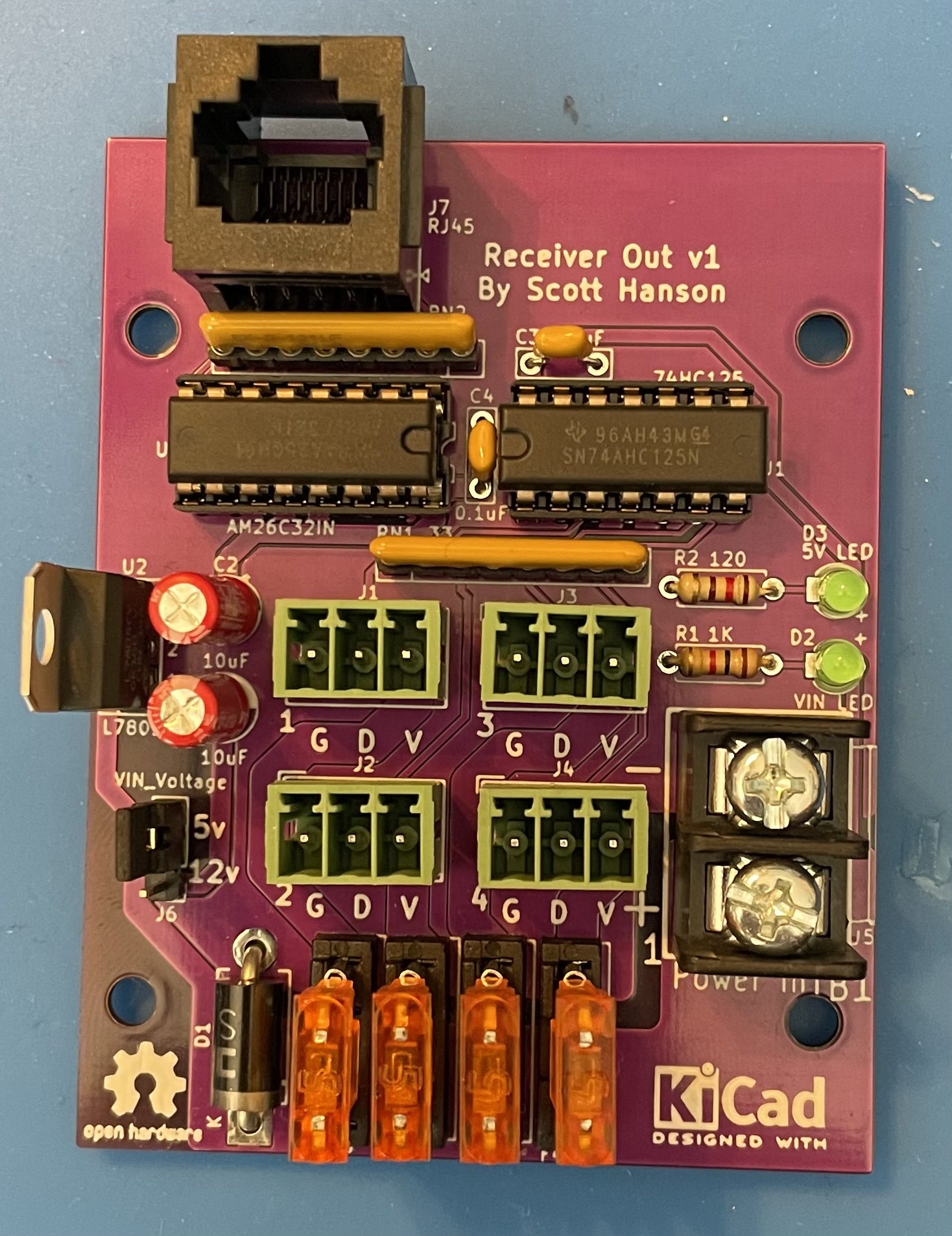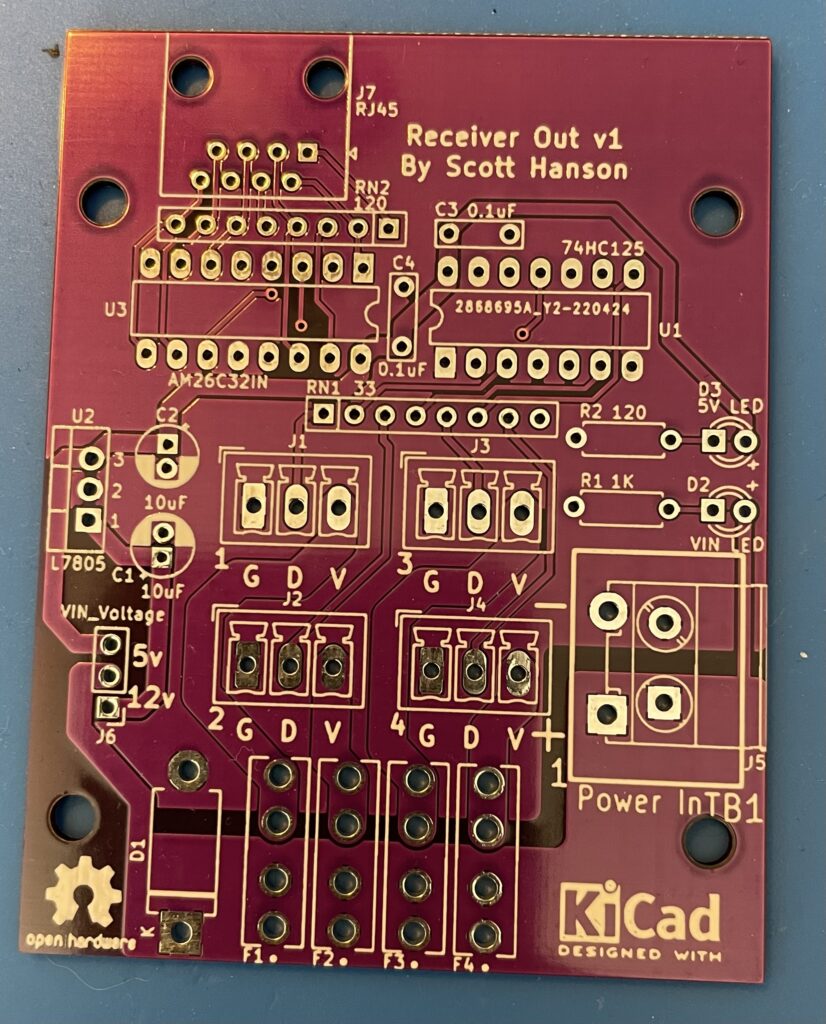
DIY Differential Receivers
Important Notice
This site is no-longer being maintained, and the content and links found here may be irrelevant and outdated. It is online for archival purposes only.
Earlier this year, due to ongoing supplier and freight issues, controllers and other components like differential receivers were hard to come by. There are still supplier issues as of this writing, but things are slowly getting better.
Scott Hanson (computergeek1507) released his own controllers and other components in a DIY format. You can see all of them here: https://github.com/computergeek1507/PB_16
While I don’t need any new controllers right now, I did have five of the PB-16 boards manufactured just so I have them in-stock if I do in the future. The PB-16 uses a Pocket Beagle running FPP for its “brains”, similar to most Kulp boards. Some of the chips, and Pocket Beagle, are still a bit hard to come by right now though. These are 16-channel pixel controller boards similar to Kulp’s K16, minus the header for an FM Transmitter and differential outputs. The Expansion Header can use Falcon’s expansion boards, and Scott has his own expansion board designs as-well. The PB-16 also includes two DMX outputs that can also drive LOR or RENARD inputs.

UPDATE (December, 2022):
Scott has been busy and has revised the controller above, along with adding many new controller, receiver, and adapter options. He has several based on the Pi Zero W now, which has more availability than BBB or PB SBCs. He even has an adapter board so you can use a Pi Zero W instead of a PB for his controller boards (with some limitations). Most of his new boards are SMD instead of thru-hole. The good news is if you don’t have the equipment to deal with SMD- JLCPCB.com can source and assemble the SMD portions for you, again at a reasonable cost.
One thing I did need a lot more of for this year are plain ol’ differential receivers. Of course there are a lot of vendors selling them, but earlier this year they were just as hard to find as controllers. I decided to have 10 boards manufactured and ordered all of the parts to build my own.
These are all open hardware boards built in KiCAD. You can take Scott’s Gerber files and upload them to JLCPCB.com, or any other PCB manufacturer. JLCPCB only takes a few days to manufacture and ship the boards, and they are remarkably affordable. Usually the shipping costs more than the boards. While I didn’t do it for the PB-16 above, generally people have Scott’s boards manufactured in purple, which can take a couple of extra days. I did this for the differential receiver boards…

Scott’s GitHub has a full BOM (Bill of Materials) for each project in an .ods (OpenDocument Spreadsheet) file, including Digi-Key and Manufacturer part numbers. You can order the components from Digi-Key or any other electronics supply company. I ordered most of the electronic components i used from Digi-Key. I bought the Phoenix connectors, power connectors, fuse headers and fuses from Amazon as they were cheaper at quantity. It took about 10 days to get the boards from JLCPCB, and about a week for the rest of the parts from Digi-Key and Amazon.
The board and all of the components are through-hole and relatively easy to solder (no SMDs). You will want a good fine-tip soldering iron with a temperature control. The terminals, fuse holders, D1, and U2 are heavy duty and take a larger tip or higher temperature, while everything else needs a very fine tip. Scott thought ahead and has the ICs and resistor packs all socketed, so you don’t have to worry about overheating them, and it’s easy to replace a failed IC.
I use this solder station, but any good variable temperature soldering iron should work fine.
I found the hardest thing to deal with is the RJ-45 connector. They are hard to snap into the board without bending the pins, and the pins are very close together. I actually snip one side of the clips that fit through the large holes so it is easier to install.
When soldering the board together- just work from the shortest (sockets, resistors, LEDs) to tallest (RJ-45, Voltage Regulator IC, Terminals) components, soldering everything in where it needs to go. The silkscreening is excellent, so it’s easy to position everything. Just remember- squares designate Pin 1 on packaged components (ICs), or + (positive) for polarity sensitive components.
Here is the end result:

I figured these cost about $15 each to build, which is around $7 less than most assembled differential receivers right now. I’ve got it down to about a half hour of soldering to build one, most of that time is just picking and placing the components.
Once assembled- I tested all of them with four strings of pixels and a Kulp K-40 as the differential source. They all work great!

So, if you don’t mind some soldering and ordering a bunch of parts, thanks to Scott Hanson you can build your own controller boards or related components like differential receivers. While I haven’t built any of the PB-16s (yet), several folks online have said they work just as well as similar commercial offerings. If you do build a controller, you may need to pay to license FPP v. 6+, but that’s a minimal cost and it goes to a great group of developers that make all of this possible. You don’t need this for a differential receiver or any other expansion board, just controller boards running FPP.
This build also inspired me to try designing and building my own PCBs in KiCAD. I started really-really simple, with a new IR Blaster design for my Vankyo Projector Power Control. I’m really happy with how it turned out. You can see it near the end of the original article. For fun I am working on an ESP-32 board with fuses, logic amp, and connectors for a simple WiFi WLED or ESPixelStick controller, which is what I got started with a few years ago. When I finish it I will post a new article about it. 😊
